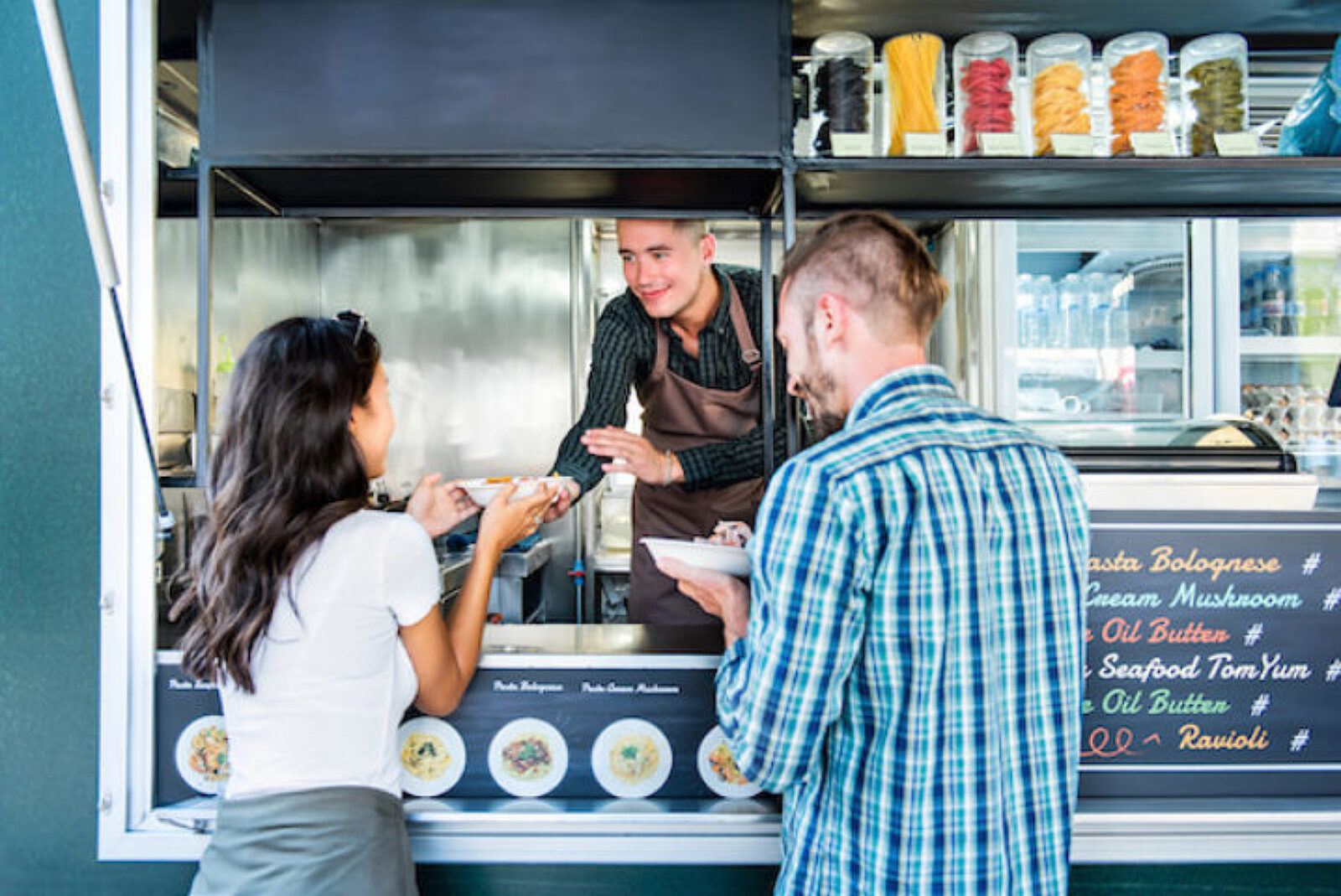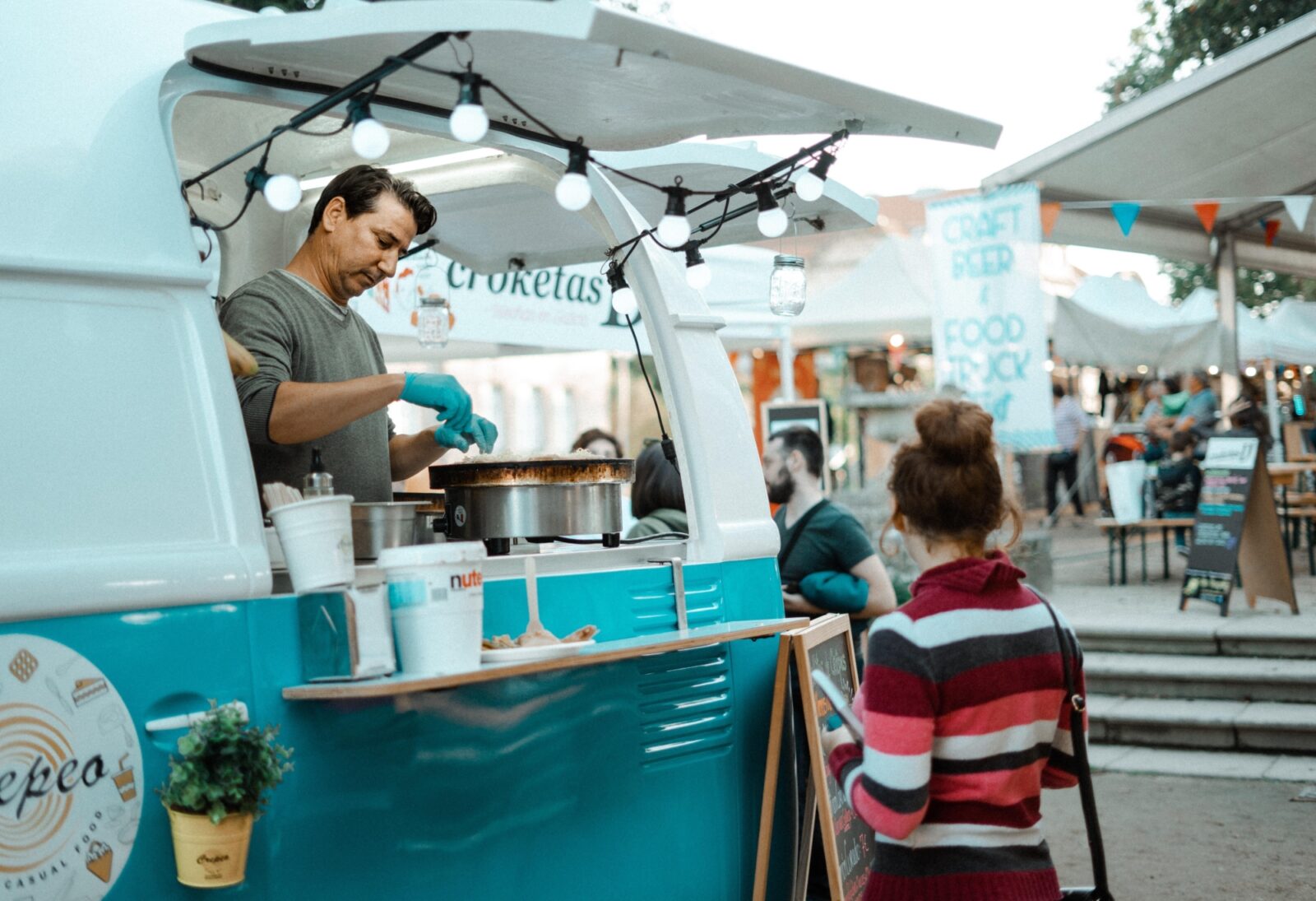
Food Truck Menu Board Ideas: How to Design a Food Truck Menu Board
Creative menu board ideas to elevate your food truck's visual appeal and drive sales.

Caroline PriceAuthor


Food Truck Menu Templates
Use these food truck menu templates as a starting point for your menu design or to give your menu a refresh.
Get free downloadAs a food truck owner, your menu board is more than just a list of dishes - it's your primary marketing tool and the key to creating an unforgettable customer experience. In the fast-paced world of street food and mobile eateries, an effective food truck menu board can make the difference between a bustling business and a slow day.
This comprehensive guide will explore innovative food truck menu board ideas, design tips, and strategies to help you create a visually appealing and functional menu display that drives sales and delights customers.
Food Truck Menu Templates
Use these food truck menu templates as a starting point for your menu design or to give your menu a refresh.

The Importance of an Effective Food Truck Menu Board
According to research reported by The Business Research Company, the food truck market surged from $3.73 billion in 2023 to $4.04 billion in 2024, boasting an 8.3% CAGR. Projections anticipate hitting $5.37 billion by 2028 at a 7.4% CAGR.
With the opportunity for steady growth and profit, your food truck menu board serves multiple crucial functions:
First Impression: The food truck menu board is often the first thing potential customers see, setting the tone for your brand and cuisine.
Information Hub: Clear, eye-catching signs communicate your menu items, specials, and pricing.
Sales Tool: A well-designed menu board can guide customers toward high-margin items and increase overall sales.
Brand Ambassador: Your signage reflects your food truck's personality and strengthens your brand identity.
Key Elements of a Successful Food Truck Menu Board
Readability
Given the often-limited space on a food truck, readability is paramount:
Choose clear, legible fonts that are easy to read from a distance.
Ensure adequate contrast between text and background colors.
Use a hierarchy of font sizes to differentiate categories, items, and descriptions.
Organization
A well-organized menu board helps customers make quick decisions:
Group similar items together (e.g., mains, sides, drinks).
Use a logical flow that guides the eye from top to bottom or left to right.
Highlight your specials or signature dishes in a prominent location.
Visual Appeal
Make your menu board visually attractive to draw in customers:
Use high-quality images sparingly to showcase key dishes.
Incorporate your brand colors and logo for consistency.
Consider the overall aesthetic of your food truck when designing your menu board.
Flexibility
The ability to update your menu quickly is crucial for food trucks:
Consider magnetic menu boards or dry erase boards for easy changes.
If using a digital menu board, ensure it's easy to update in real time.
Types of Food Truck Menu Boards
Here are some pros and cons to consider when choosing the best type of menu board for your food truck:
Chalkboard Menu
Pros:
Easy to update daily specials.
Rustic, artisanal appeal.
Cost-effective.
Cons:
Can be difficult to read in bright sunlight.
Requires good handwriting or chalk art skills.
Magnetic Menu Board
Pros:
Easy to update and rearrange.
Durable for outdoor use.
Can be custom designed.
Cons:
Initial cost can be higher than some alternatives.
Magnetic letters can go missing.
Digital Menu Board
Pros:
Easy to update in real time.
Can display high-quality images and videos.
Allows for dayparting (changing menus based on time of day).
Cons:
Higher initial cost.
Requires power source and protection from elements.
Sandwich Board or Sidewalk Sign
Pros:
Attracts attention from a distance.
Can be moved to optimal locations.
Often double-sided for maximum visibility.
Cons:
Limited space for menu items.
May require permits in some locations.
Wall-Mounted Menu Board
Pros:
Maximizes use of vertical space.
Can be large and comprehensive.
Variety of materials available (e.g., acrylic, wood, metal).
Cons:
Less flexible for frequent changes.
May be difficult to read from a distance.
Custom Vinyl Decals
Pros:
Weather-resistant.
Can cover large areas of the food truck.
Professional, polished look.
Cons:
Less flexible for menu changes.
Higher initial cost.
Design Tips for Food Truck Menu Boards
Keep it Simple: Don't overwhelm customers with too many choices. Focus on your best-selling items and specials.
Use High-Contrast Colors: Ensure your text stands out against the background for maximum readability.
Incorporate Branding: Use your logo, brand colors, and fonts consistently across all signage.
Highlight Specials: Use a dedicated area or different color to draw attention to daily specials or limited-time offers.
Include Mouthwatering Descriptions: Use concise, appetizing language to describe your dishes.
Consider Your Environment: If your food truck often operates in sunny areas, avoid glossy materials that might cause glare.
Use Icons Wisely: Icons can quickly convey information about dietary restrictions, spice levels, or popular items.
Incorporate QR Codes: Link to your full menu, online ordering system, or social media profiles.
Think Vertically: Utilize the height of your food truck for menu displays to maximize visibility.
Create a Photo Opportunity: Design an area of your menu board or truck that encourages social media sharing.
Innovative Food Truck Menu Board Ideas
Interactive Digital Menu: Use a touchscreen display that allows customers to view detailed information about each dish, including ingredients and nutritional info.
Rotating Menu Board: Install a rotating board that showcases different sections of your menu as it turns.
Illuminated Menu Board: Use LED lighting to make your menu board visible and attractive at night.
Augmented Reality Menu: Create an AR experience where customers can see 3D models of your dishes by scanning a QR code.
Modular Menu System: Use a system of interchangeable panels that can be easily swapped out for different events or seasons.
Sliding Menu Board: Design a menu board with sliding panels to reveal different sections or daily specials.
Menu Board as Art: Commission a local artist to create a unique, eye-catching menu board that doubles as a piece of art.
Tailoring Your Menu Board to Your Cuisine
Known as one of the architects of the modern food truck movement, Roy Choi opened his Korean-Mexican BBQ taco truck, Kogi, after recognizing that people in inner cities couldn’t access quality food made with fresh ingredients at an affordable price. He told Koreafornian Cooking, “The Kogi BBQ” Korean taco changed the way America eats and how they are accessing food… It gave people an entrepreneurial spirit. It also lowered price point of good, delicious food. It created a street food movement. It struck a nerve.”
Menu boards represent your food and create an opportunity to connect with your customers. That’s why different types of food trucks may benefit from specific menu board styles:
BBQ Food Truck:
Use a rustic chalkboard or wooden board for an authentic feel.
Incorporate flame or grill imagery.
Highlight meat options and smoking times.
Taco Truck:
Use bright, festive colors.
Consider a magnetic board for easily updating daily specials.
Include a visual guide for building custom tacos.
Coffee Shop Truck:
Use a clean, minimalist design.
Include a visual guide to highlight coffee drink options.
Highlight seasonal specials and non-coffee options.
Fast Food Truck:
Use large, clear fonts for quick readability.
Incorporate recognizable icons for popular items.
Focus on combo meals and value options.
Implementing Your Food Truck Menu Board: Best Practices
1. Test Readability: Ensure your menu is legible from various distances and angles.
2. Train Your Staff: Make sure your team knows how to update and maintain the menu board.
3. Stay Consistent: Maintain brand consistency across all customer touchpoints, including your menu board and social media.
4. Update Regularly: Keep your menu board fresh by updating seasonal items or promoting limited-time offers.
5. Consider Lighting: Ensure your menu board is well-lit and easily readable in all lighting conditions.
6. Use Templates: Consider using food truck menu templates from design tools like Canva for a professional look.
7. Gather Feedback: Ask customers for their opinions on your menu board's clarity and appeal.
Measuring the Impact of Your Menu Board
After implementing your new food truck menu board, track its impact:
Monitor changes in sales, particularly for highlighted items.
Observe customer behavior and ordering patterns.
Collect customer feedback on the new design.
Analyze any changes in ordering speed or efficiency.
Use these insights to continually refine your menu board strategy and maximize its effectiveness.
Driving Success with Your Food Truck Menu Board
Your food truck menu board is a powerful tool for attracting customers, showcasing your offerings, and boosting sales. By carefully considering your design, materials, and content, you can create a menu board that not only informs but also excites and delights your customers.
Remember, the most effective food truck menu boards balance visual appeal with functionality, guiding customers toward satisfying choices while reflecting your unique brand. Whether you opt for a high-tech digital display or a charming chalkboard, the key is to choose a design that aligns with your cuisine, engages your customers, and effectively showcases your delicious offerings.
As you embark on your menu board design journey, don't be afraid to get creative and iterate based on customer feedback. Your perfect menu board solution might combine elements from several ideas or inspire you to create something entirely unique. The goal is to develop a menu board that not only informs but also enhances the overall customer experience, setting the stage for a successful and thriving food truck business.
By investing time and thought into your food truck menu board design, you're not just listing your dishes – you're crafting a key part of your customers' experience and your brand's story. So, let your creativity shine and watch as your well-designed menu board becomes a cornerstone of your food truck's success on the streets.
Is this article helpful?
DISCLAIMER: This information is provided for general informational purposes only, and publication does not constitute an endorsement. Toast does not warrant the accuracy or completeness of any information, text, graphics, links, or other items contained within this content. Toast does not guarantee you will achieve any specific results if you follow any advice herein. It may be advisable for you to consult with a professional such as a lawyer, accountant, or business advisor for advice specific to your situation.
Read More
Subscribe to On the Line
Sign up to get industry intel, advice, tools, and honest takes from real people tackling their restaurants’ greatest challenges.



